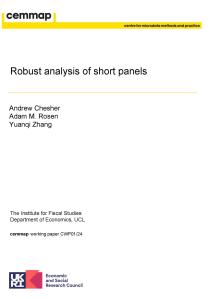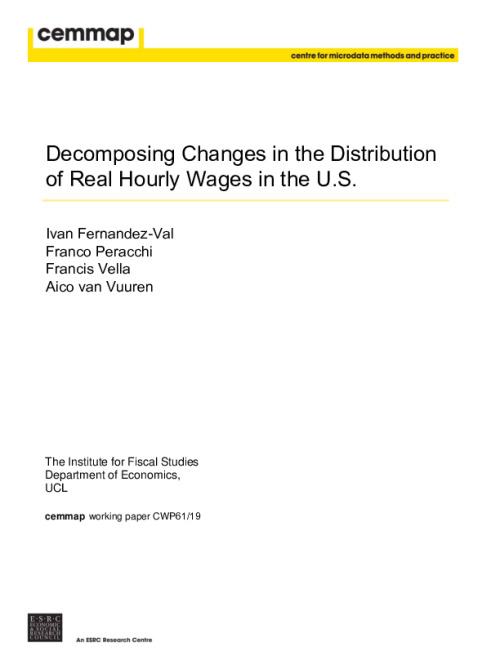Downloads
We analyze the sources of changes in the distribution of hourly wages in the United States using CPS data for the survey years 1976 to 2016. We account for the selection bias from the employment decision by modeling the distribution of annual hours of work and estimating a nonseparable model of wages which uses a control function to account for selection. This allows the inclusion of all individuals working positive hours and thus provides a fuller description of the wage distribution. We decompose changes in the distribution of wages into composition, structural and selection effects. Composition effects have increased wages at all quantiles but the patterns of change are generally determined by the structural effects. Evidence of changes in the selection effects only appear at the lower quantiles of the female wage distribution. These various components combine to produce a substantial increase in wage inequality.
Authors

Research Associate Georgetown University
Francis Vella is a Research Associate of the IFS and a Professor and the Edmund Villani Chair in Economics at Georgetown University.

Ivan Fernandez-Val

Aico van Vuuren

Franco Peracchi
Working Paper details
- DOI
- 10.1920/wp.cem.2019.6119
- Publisher
- The IFS
Suggested citation
Fernandez-Val, I et al. (2019). Decomposing Changes in the Distribution of Real Hourly Wages in the U.S.. London: The IFS. Available at: https://ifs.org.uk/publications/decomposing-changes-distribution-real-hourly-wages-us (accessed: 18 April 2024).
More from IFS
Understand this issue

Retirement is not always a choice that workers can afford to make
6 November 2023

Big firm, little firm: are differences between companies driving inequality and holding back growth?
30 August 2023

Still a man’s world? Gender inequalities, parenthood and the workplace
23 August 2023
Policy analysis

Is there really an NHS productivity crisis?
17 November 2023

IFS Deputy Director Carl Emmerson appointed to the UK Statistics Authority Methodological Assurance Review Panel
14 April 2023

Three key takeaways from our TaxDev Tax Expenditures Workshop
17 March 2023
Academic research

Sample composition and representativeness on Understanding Society
2 February 2024

Understanding Society: minimising selection biases in data collection using mobile apps
2 February 2024

Robust analysis of short panels
8 January 2024
